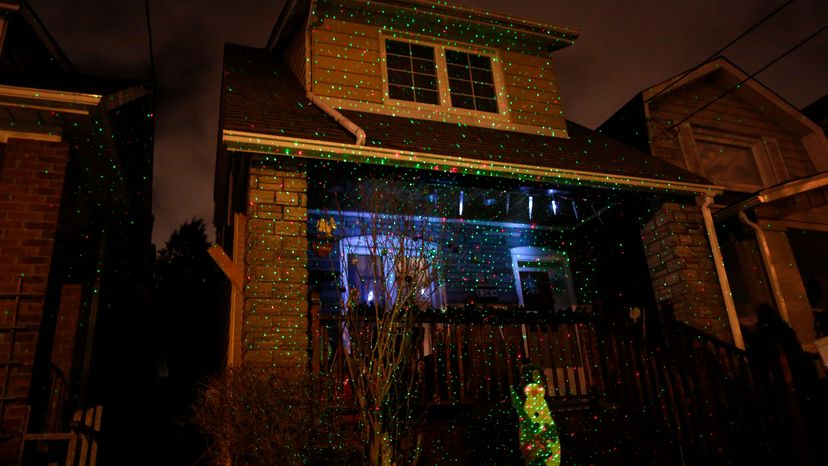LED Christmas Lights and Projectors

Nowadays, it's more common for Christmas lights to use LED lights rather than incandescent lights.
Henry Joseph Round was credited with the discovery of the light-emitting diode (LED) in 1907, but it wasn't until the 1960s that LEDs were used commercially. LED lights don't have filaments that will burn out and they generate light without adding heat. LEDs are illuminated by electrons moving in a semiconductor material. Here's how a blog at the U.S. Dept. of Energy describes the process:
Advertisement
LEDs are wired in a parallel series like incandescents, but they don't use shunts. When an LED bulb fails, it typically short-circuits, so the rest of the string can work even in the absence of a shunt. The first LED Christmas lights were sold in 1998, and by the early 21st century, Christmas trees at both the U.S. Capitol and Rockefeller Center had been lit using only LED lights.
Even though they cost consumers more upfront, LED lights use 80 percent less energy and last much longer than traditional incandescent lights. For instance, 10 strings of incandescent mini-lights would burn 408 watts, but the same strings of LED lights would only burn 4 watts. An LED bulb may last 50,000-200,000 hours while the incandescent bulb will burn for 3,000 hours.
An added benefit is that these lights are often programmable, allowing users to change the color of the lights and select different blinking modes. They also come in a variety of shapes and styles.
LED lights have also allowed the use of laser projectors in holiday light décor. When these projectors are pointed at a house, they create special effects like falling snow or flying reindeer. Here's how they work: Light is passed through a lens, which magnifies and displays a picture. Unlike traditional projectors which use light bulbs, laser projectors use LEDs to produce the light. Holiday laser projectors are popular because they're easier to set up than string lights, especially when decorating rooftops.
However, these projectors can disrupt air traffic if they aren't used properly. In 2020, 6,852 laser incidents involving aircraft were reported to the FAA, compared with 385 in 2006. When lasers hit airplanes, the pilot and other crew members may experience temporary blindness, headaches and watery eyes. It's important that consumers point these projectors directly at their homes, not at the sky.
Other popular holiday light trends include ombre (lights moving from one color to another seamlessly), oversized Christmas lights and geometric shapes.